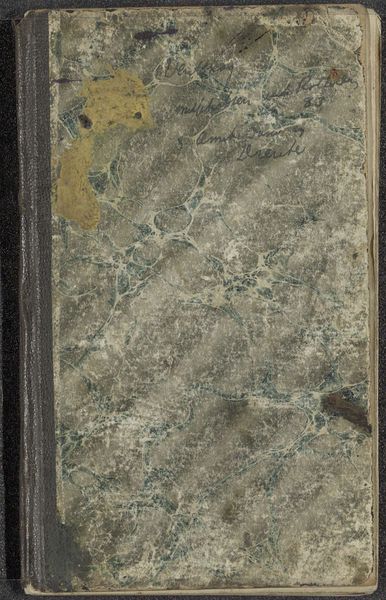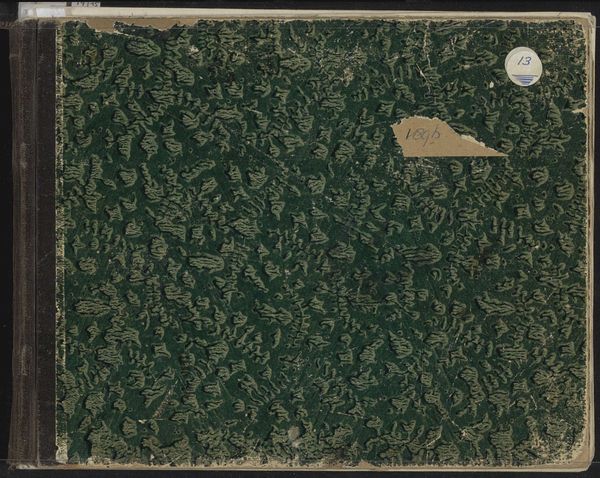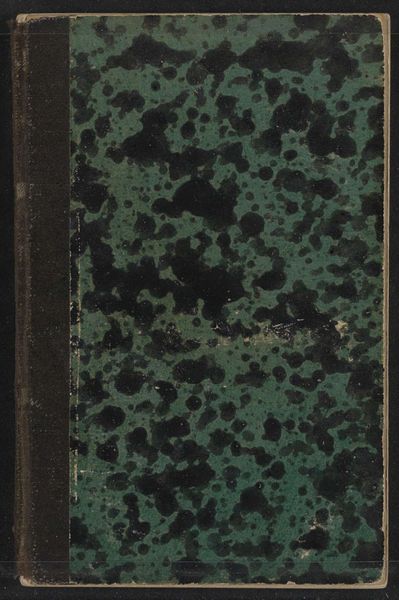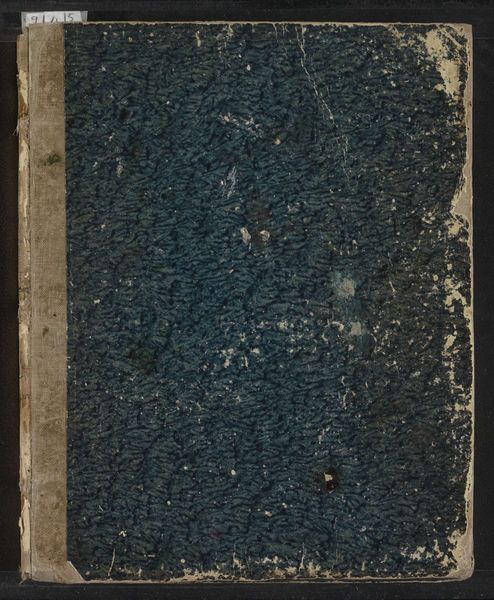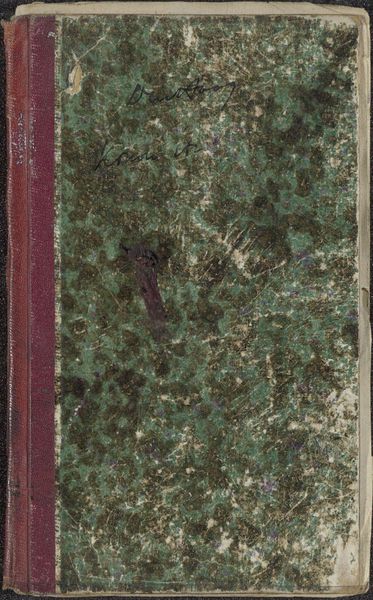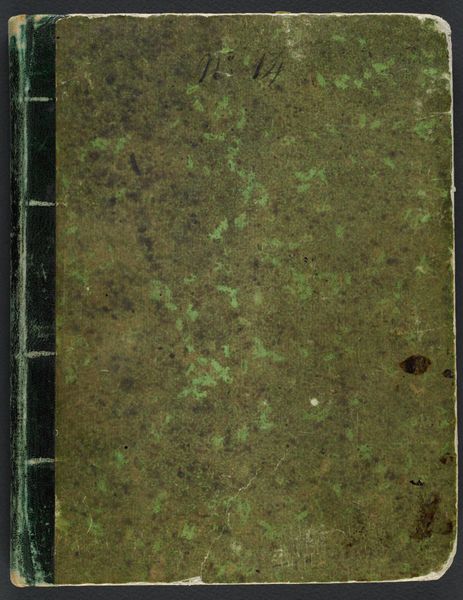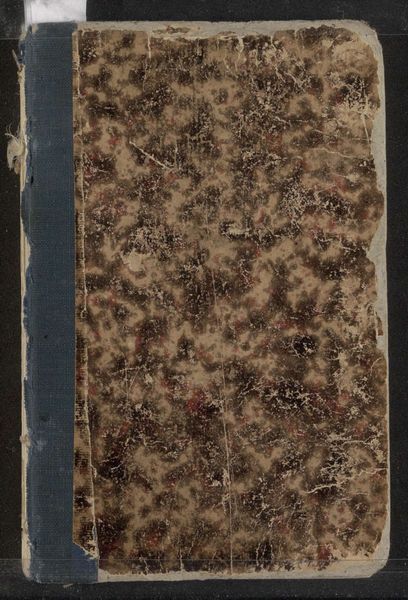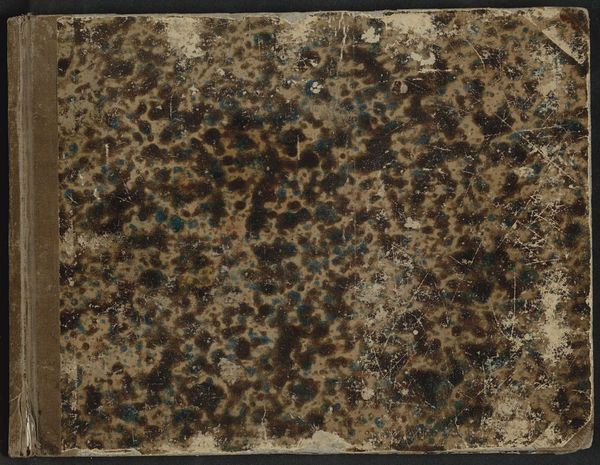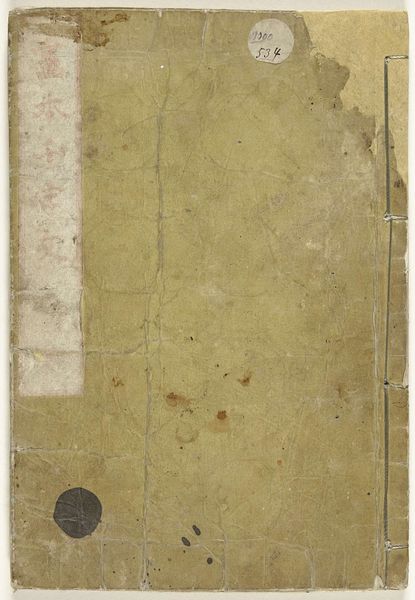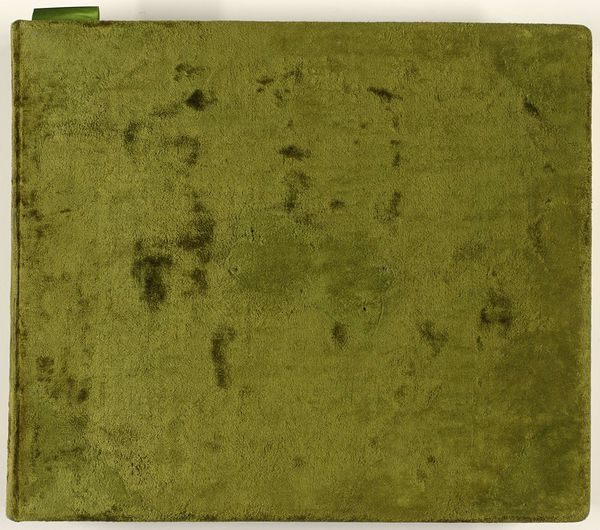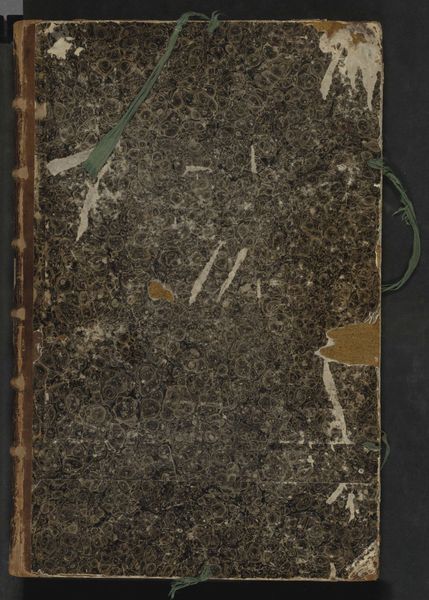
drawing, mixed-media, paper
#
drawing
#
mixed-media
#
muted colour palette
#
worn
#
paper
#
grainy texture
#
mixed media
#
watercolor
Dimensions: height 348 mm, width 248 mm, thickness 8 mm, width 500 mm
Copyright: Rijks Museum: Open Domain
Curator: This is Isaac Israels' "Sketchbook LXVI-B with 25 sheets," dating from roughly 1886 to 1934. The sketchbook utilizes mixed media, incorporating drawings and watercolors on paper. Editor: My first thought is that it has such a subdued, almost ghostly presence. The textured green cover, mottled and faded, gives it a feeling of great age and intimacy, like a treasured object handled countless times. Curator: Indeed. The physical condition itself tells a story. Consider Israels' own trajectory during those years. He moved through artistic circles, depicting scenes of modern life in Amsterdam and later the fashion world in Paris and London. The sketchbook served as a personal space where preliminary sketches became more elaborate compositions and documentary scenes that recorded a rapidly changing world. Editor: And it makes me think of the symbolism of sketchbooks themselves. A sketchbook is a place for ideas to gestate. Its images and personal history can come together in the same location to create a sort of "dream-world" on paper. There is great intention and intuition in its use. This sketchbook gives me a feeling of intense self-expression. Curator: Yes, absolutely, because of the portability of a sketchbook such as this one, it allowed him to rapidly capture daily life as he experienced it, informed, of course, by the major political, technological, and cultural shifts of the time, as he saw it. It acted as a personal laboratory that supported not only his artistic skill, but documented and informed a broader artistic awareness and purpose. The very personal record became his personal world view, made visual. Editor: Looking closer, the textures really stand out, creating this sense of depth. The green itself is interesting. The fact that its base seems faded, aged, damaged by time, perhaps connects us to mortality, or change and reminds me that creativity and vision exist even as the material objects degrade and evolve through time. It lends an elegiac quality, perhaps a feeling for past eras? Curator: Exactly. It invites questions about what Israels sought to capture during that period, what traces of daily life—however personal or seemingly insignificant—were important to him. Editor: In the end, beyond a repository, a sketchbook becomes a monument—a record that encapsulates time, intention, memory and ultimately becomes, for the viewer, a unique and resonant emotional encounter. Curator: I completely agree; these worn surfaces prompt us to reflect on history’s material reality—on what it felt like to exist and observe the world from Israels’s distinct social position.
Comments
No comments
Be the first to comment and join the conversation on the ultimate creative platform.
